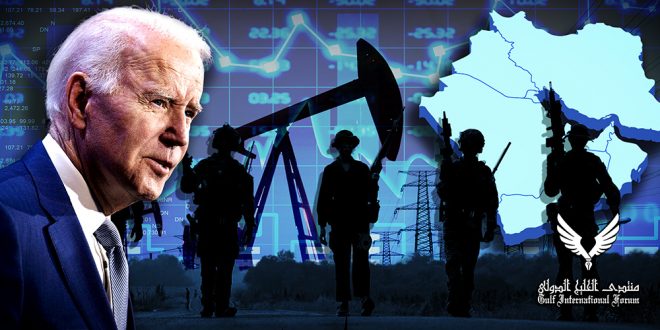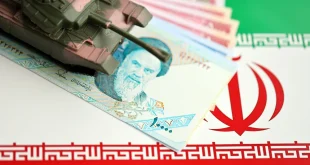After a year of unprecedented turmoil, global energy prices could return to a ‘new normal’ in 2023—or they could be further disrupted by ongoing or new political and economic crises.
The full-scale Russian invasion of Ukraine in February 2022 led to major reverberations in energy markets around the world. In an attempt to pursue alternatives to newly sanctioned Russian hydrocarbons, some European countries lowered their limits on coal-fired power plants, while others pushed back the proposed retirement dates of existing coal and nuclear power plants. In spite of the sudden proliferation of coal, however, reduced demand due to high oil and gas prices and continued growth in renewable energy generation limited overall greenhouse gas emissions throughout the year. Following a 60 percent rise in energy prices during 2022, the World Bank is forecasting a decrease of 11 percent in 2023, due in large part to China’s slowed growth during its COVID-19 lockdowns. The Chinese government’s COVID-19 policies during the coming year are likely to have a major impact on the price of oil and liquefied natural gas (LNG), and Beijing’s early indications that it will abandon its “zero-COVID” stance have encouraging implications for an increase in hydrocarbon prices.
The fluctuations in the oil market in 2022 suggest that both geopolitical events and the growth of the global economy will continue to shape the oil market in 2023. Brent crude oil prices were rising at the start of 2022 as the pandemic-induced slowdown in the global economy eased, hitting $130 a barrel in March in the early days of the Russian invasion. Demand is predicted to grow slower than in the pre-pandemic era; while demand increased at a rate of two million barrels per day in 2019, it is expected to increase by 1.7 million bpd in 2023, with roughly half of this projected demand from China’s economic recovery. Both oil and European gas prices may have dropped from early 2022 highs, but concerns over demand remain a pressing issue.
In 2022, OPEC pursued oil production cuts in order to raise prices, drawing the ire of the United States. OPEC justified its decision by claiming that it was reducing carbon production and redefining its equipment in line with climate change plans. OPEC’s long-term goal has usually remained the preservation of “price stability,” ensuring the continued operation of existing oil fields without decreasing global prices. Facility shutdowns can cause physical damage to oil equipment and even the fields themselves. Shutting down ocean drilling is difficult and costly, so keeping global prices steady is in OPEC’s interest.
Politics and Energy
The oil market by early 2023 may behave quite differently as the world awaits the outcome of events that could potentially shift supply and demand in the coming days and weeks. Oil exports play a particularly important role in Saudi Arabia’s economy, as the country’s economic diversification efforts have fallen behind their benchmarks under the “Vision 2030” reform plan. Riyadh’s actions suggest that despite the turmoil in the oil market and the fear of market stagnation, there is confidence in the country’s revenues. The country’s authorities expect the budget surplus for 2023 to reach SAR 16 billion (USD $4.3 billion).
According to the IMF, Saudi Arabia can break even at a price of $73.30 per barrel, shifting to $66.80 next year. Independent analysts have suggested that Riyadh’s 2023 budget assumes an oil price ranging from $70 to $80 per barrel, and Mazen al-Sudairi, head of research at Al Rajhi Capital, suggests it is based on a figure of $78 a barrel. At the same time, the UAE, as reported by Bloomberg, will return to its energy routes and is reportedly looking to increase both oil and gas production—a step that could provoke tensions with OPEC, which has sought to keep prices high throughout the year. Abu Dhabi National Oil Co. (Adnoc), plans to invest $150 billion, rather than the $127 billion initially proposed, in the runup to 2027.
While the UAE‘s oil exports have reached about 3.7 million barrels per day and Iraq’s have reached about 4.5 million barrels per day, Iran’s daily oil exports are estimated to remain at only 1 to 1.5 million barrels per day in 2023. Iranian oil, subject to extensive international sanctions since 2018, is exchanged at a huge discount in informal markets. The troubles of Iran’s oil market do not end there, and now the Group of Seven and Australia have set a price ceiling of $60 for Russian oil—effectively keeping prices low for Iranian supplies as well. According to the G7 plan, if Russia sells its oil at $60 or less, it can use the exemption from sanctions on oil tankers and insurance companies, and this situation has driven oil prices down and made Iranian exports less competitive. After the war in Ukraine and the embargo on its oil, Russia has also changed its market from Europe to Asia, particularly China, further reducing Tehran’s market share in these regions.
If the war in Ukraine continues, sanctions against Russia are likely to persist as well, with concerning implications for the future of Iran’s oil market. In the meantime, the potential of a nuclear agreement in Iran is lessening as Western anger grows over the Iranian government’s crackdown on its domestic protest movement and its sale of drones to Russia for use in Ukraine. When it comes to China, the United States may not pursue financial sanctions and will maintain export controls while establishing a system to control China-bound investment. Iran has employed multiple tools to get around sanctions and maintain its foreign currency earnings and market share. In 2022, POLITICO reviewed Western data related to transactions between foreign-registered front companies and Iranian clearing houses. The data suggests that organized Iranian sanctions-busting efforts have brought in tens of billions of dollars per year to benefit the regime. This data highlights the extent to which Iran can get around U.S. supposed maximum pressure sanctions.
In 2023, oil refineries around the world will likely continue to enjoy healthy profit margins. These margins remained stable throughout 2022 and are expected to persist in 2023, although slower demand growth and growing competition from new refinery startups could affect these trends. Geopolitical policy shifts—sanctions on Russia, nuclear negotiations with Iran, an American rapprochement with Venezuela, and OPEC production quota policies—could also play a role.
Broader Trends
The war in Ukraine, tensions between Russia and the West, OPEC+ policies, changes in the value of the U.S. dollar, the state of the Chinese economy, and the monetary policies of major central banks that affect economic activities are the main factors that will determine the direction of the oil market in 2023. The trends observed in the oil market this past year could continue in the next year, or it could witness the effect of new factors. Perhaps the most important factor will be the fate of the war in Ukraine; if the war continues, the tensions between Europe and Russia will continue, exacerbating the global energy crisis.
Considering the concerns about the recession in the world economy and the continuation of the Kremlin’s policy in the oil market, it seems that a difficult year is ahead for energy-producing and consuming countries. Any attack on the energy infrastructure of the GCC states will lead to more chaos in the energy market. If Russia’s invasion of Ukraine ends through negotiations, it will play an important role in Europe’s energy security and Russia’s economic stability. Putin’s adventures will play an important role in the energy market and OPEC will continue its active role in the market, while Iran will face serious challenges and Saudi Arabia and the UAE have prepared extensively for any possible scenarios. The next year will not be an easy year for the global energy market and the global economy.





